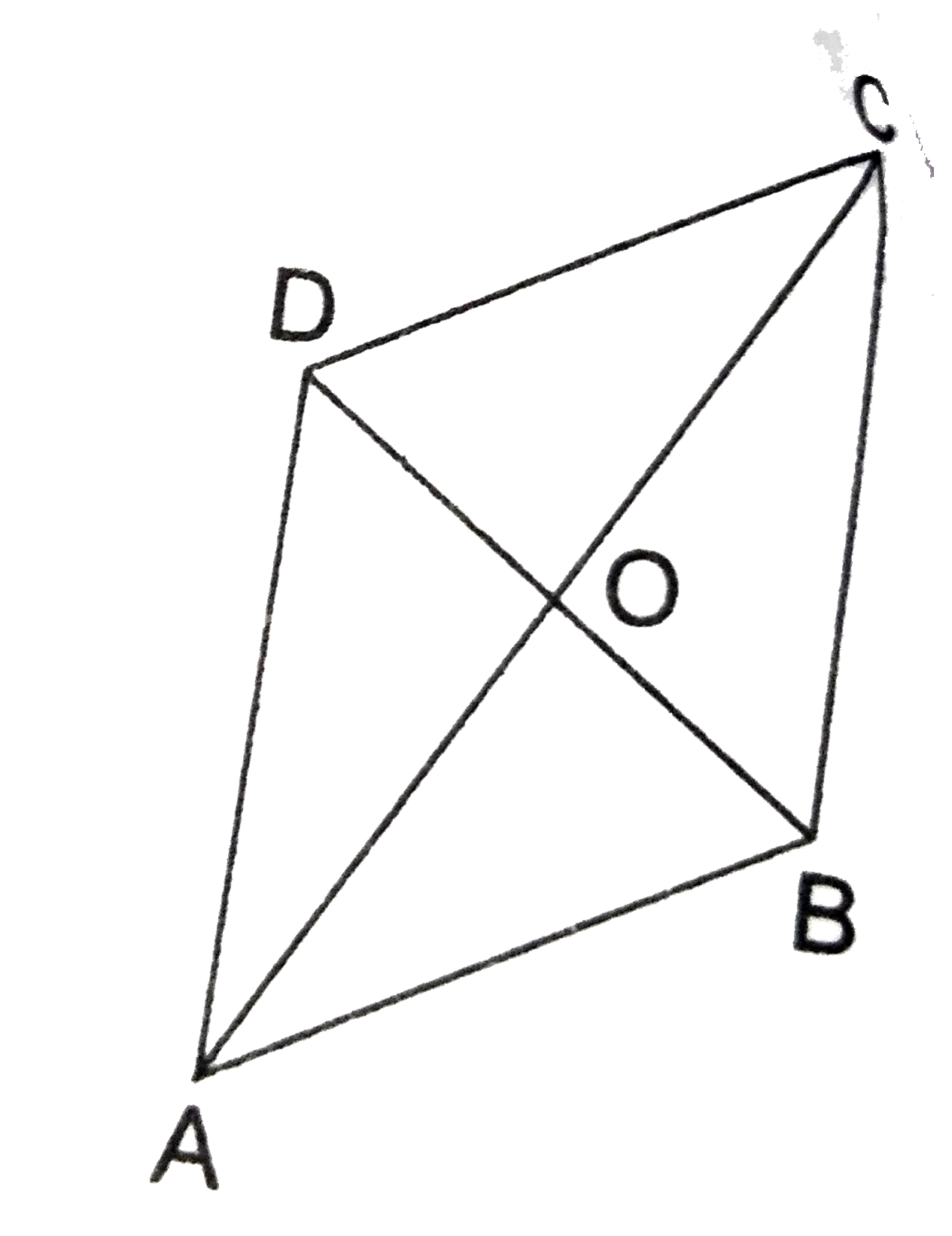In a rhombus ABCD,∠A=60∘andAB=6cm. The length of the diagonal BD is equal to
The correct Answer is:6
To find the length of diagonal BD in rhombus ABCD where ∠A=60∘ and AB=6cm, we can follow these steps:
1. Understand the Properties of a Rhombus:
- In a rhombus, opposite angles are equal and adjacent angles are supplementary.
- Therefore, if ∠A=60∘, then ∠C=60∘ as well.
- The sum of the angles in a quadrilateral is 360∘. Thus, ∠B+∠D=360∘−(60∘+60∘)=240∘.
2. Determine the Angles B and D:
- Since ∠B and ∠D are equal (as they are opposite angles in a rhombus), we can set ∠B=∠D.
- Therefore, 2∠B=240∘ implies ∠B=120∘ and ∠D=120∘.
3. Analyzing Triangle ABD:
- In triangle ABD, we have ∠A=60∘ and ∠B=120∘.
- The third angle ∠D can be calculated as 180∘−(60∘+120∘)=0∘ (which is not possible). Thus, we need to use the properties of the triangle formed by the diagonals.
4. Using the Sine Rule in Triangle ABD:
- Since AB=6cm and ∠A=60∘, we can find the length of diagonal BD using the sine rule or by recognizing that triangle ABD can be split into two 30−60−90 triangles.
- In a 30−60−90 triangle, the sides are in the ratio 1:√3:2. Here, AB is the hypotenuse.
5. Calculate the Length of BD:
- The length of diagonal BD can be calculated as:
BD=AB×sin(60∘)=6×√32=3√3cm
Final Answer:
The length of diagonal BD is 3√3cm.
- In a rhombus, opposite angles are equal and adjacent angles are supplementary.
- Therefore, if ∠A=60∘, then ∠C=60∘ as well.
- The sum of the angles in a quadrilateral is 360∘. Thus, ∠B+∠D=360∘−(60∘+60∘)=240∘.
- Since ∠B and ∠D are equal (as they are opposite angles in a rhombus), we can set ∠B=∠D.
- Therefore, 2∠B=240∘ implies ∠B=120∘ and ∠D=120∘.
- In triangle ABD, we have ∠A=60∘ and ∠B=120∘.
- The third angle ∠D can be calculated as 180∘−(60∘+120∘)=0∘ (which is not possible). Thus, we need to use the properties of the triangle formed by the diagonals.
- Since AB=6cm and ∠A=60∘, we can find the length of diagonal BD using the sine rule or by recognizing that triangle ABD can be split into two 30−60−90 triangles.
- In a 30−60−90 triangle, the sides are in the ratio 1:√3:2. Here, AB is the hypotenuse.
- The length of diagonal BD can be calculated as:
BD=AB×sin(60∘)=6×√32=3√3cm
The length of diagonal BD is 3√3cm.
Topper's Solved these Questions
- BOOK - MTG IIT JEE FOUNDATIONCHAPTER - QUADRILATERALS EXERCISE - Olympiad/HOTS CORNER15videos
QUADRILATERALS
- BOOK - MTG IIT JEE FOUNDATIONCHAPTER - QUADRILATERALS EXERCISE - EXERCISE (Subjective Problems) (Long Answer Type)5videos
QUADRILATERALS
- BOOK - MTG IIT JEE FOUNDATIONCHAPTER - PROBABILITYEXERCISE - OLYMPIAD/HOTS CORNER20videos
PROBABILITY
- BOOK - MTG IIT JEE FOUNDATIONCHAPTER - STATISTICSEXERCISE - Olympiad/HOTS Corner20videos
STATISTICS
Similar Questions
Knowledge Check
- Question 1 - Select One
In a rhombus ABCD, ∠A=60∘, AB = 12cm. Then the diagonal BD is
A10 cmB2√3cmC6 cmD12 cm - Question 2 - Select One
ABCD is a rhombus whose side AB=4cmand ∠ABC=120∘, then the length of diagonal BD is equal to :
A1 cmB2 cmC3 cmD4 cm - Question 3 - Select One
In a rhombus, the length of a diagonal is 6√3 and length of other diagonal is equal to side of the rhombus. Then, find the area of rhombus.
A18√3B20√3C15√3D16√3
In a rhombus ABCD, if ∠A=60∘ find ∠B,∠C&∠D.
View SolutionIf A Rhombus having ∠A=60∘ . Diagonal BD = 5 am find area and other diagonal .
View SolutionABCD is a rhombus whose one angle is 60∘.prove that the ratio of length of its diagonal is √3:1
View SolutionIn a rhombus ABCD, ∠ADC:∠BCD=1:2andEF:BD=1:3, where E and F lie on the diagonal BD, inside the rhombus, such that □AECF is a quadrlateral. Find the ratio of areas of □AECF:□ABCD.
View SolutionABCD is a rhombus in which ∠C=60∘then AC:BD=.
 View Solution
View Solution

